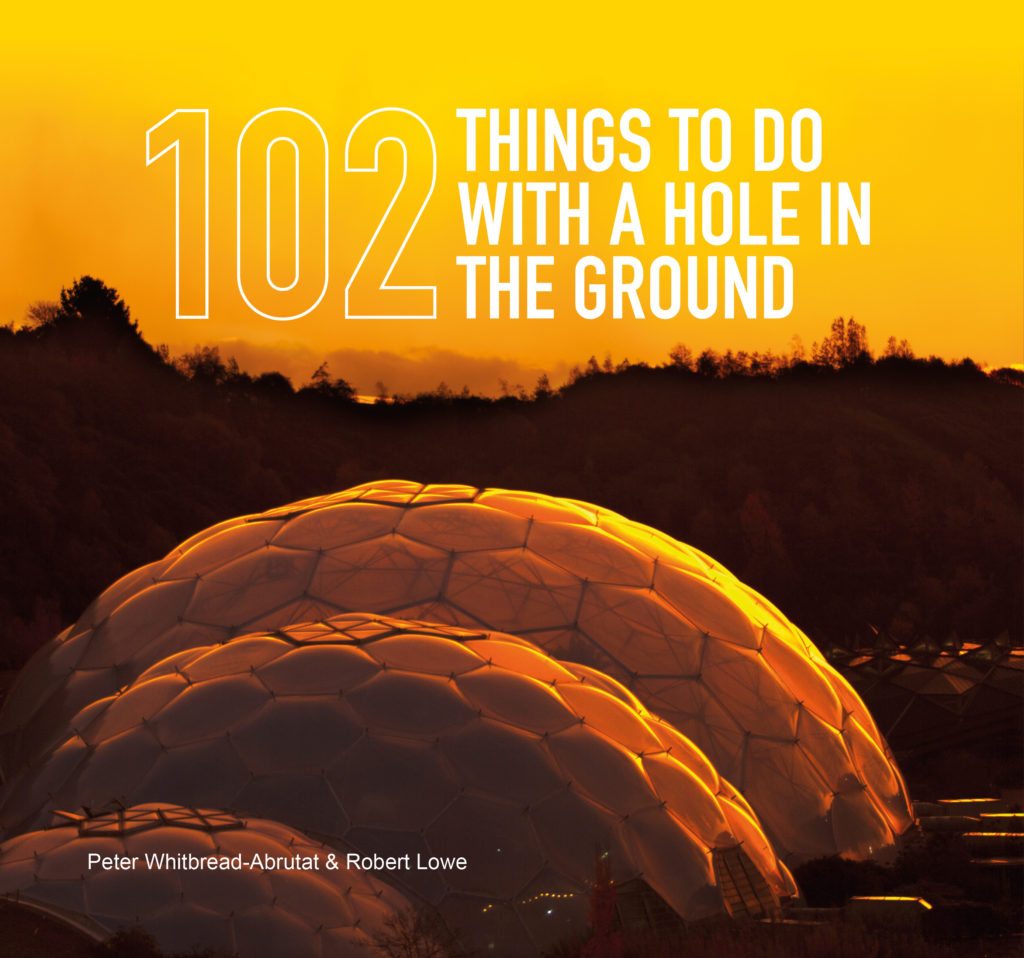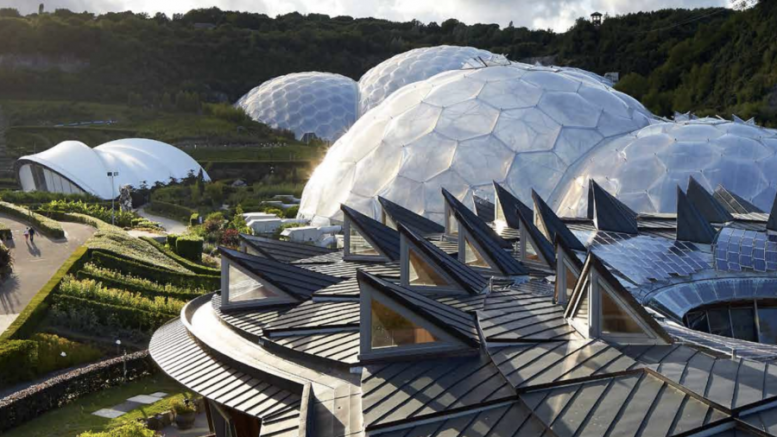Telling the stories of reinvented coal mining regions, regenerated communities and rebuilt ecosystems, a new book published this month – 102 Things to Do with a Hole in the Ground – showcases remarkable post-mining reclamation projects around the world.
The book is a sequel to the original 101 Things to Do with a Hole in the Ground, published in 2009 by the Eden Project — a UK-based example of successful mine site transformation.
The Eden Project successfully turned the site of former clay mines in Cornwall, UK, into a thriving botanical garden housed by geodesic domes designed by Grimshaw Architects. The Rainforest Biome, which opened in 2001 as an environmental visitor attraction, is now home to thousands of the world’s rainforest plants, fed by ultraviolet light.
The new book tells stories from around the world. They include the tailings storage facility at Abosso Goldfields’ Damang mine in Ghana, once a white sand industrial wasteland, but now a veritable garden of paradise. And in Germany, about 1.7 billion cubic metres of earth were moved to create new landforms out of its 300-million-tonne-per-year lignite mining industry, transforming it from lignite to lakelands.
But co-author Dr. Peter Whitbread-Abruta told The Northern Miner’s sister website MINING.com in an interview that his favourite example comes from Sudbury, Ont.
“What I like about the Sudbury story is it was utterly devastated for a century – all the land was denuded and the soil was toxic and the forest wouldn’t regrow, yet there was still tens of thousands of people still living there working in the mining industry and having to live in that kind of environment,” he said.
“The rejuvenation was a combination of improved government regulation, science-based solutions, finding out what the mechanisms were and fixing them with the local university and then community action working together and then more progressive thinking by some mining companies that worked in partnership in the 2000s and later as a significant environmental renewal story that has lessons that reverberate around the world.”
Whitbread-Abruta is an IEMA Environmental Auditor in mining ESG and sustainability, mine closure and international development in developing and conflict-affected countries.
‘Good stuff going on’
About 20% of the case studies in the new book are updates on projects that were included in the first.

“The first book was very much focused on a collection of photographs and captions and I wanted to do something that told more of a story this time and we had a bigger budget and we could do a better job,” Whitbread-Abruta said.
Though co-sponsored by mining majors Rio Tinto (NYSE: RIO; LSE: RIO; ASX: RIO), BHP (NYSE: BHP; LSE: BHP; ASX: BHP), Anglo American (LSE: AAL) and Newmont (TSX: NGT; NYSE: NEM), Whitbread-Abruta emphasized the authors had editorial independence, as no one involved wanted to be accused of greenwashing.
“I went into this with my eyes open,” he said. “I’ve worked all over the world on some pretty dodgy old mine sites in different parts of the world and so I know what a lot of the industry is like and I also know there’s some good stuff going on that needs to be talked about as well, and if you can inspire people – that can help drive change.”
“Rio Tinto got interested in what we’ve done from a mine closure perspective because it was quite unique and unusual thing to do with a hole in the ground in Cornwall,” he said. “[The Eden Project] attracted one and a half million people in the first year and since we opened its attracted 25 million people and generated over £2 billion of value added to the local economy and created hundreds of jobs, so in terms of vehicle for socio-economic regeneration and environmental renewal its been a poster child.”
Whitbread-Abruta acknowleged the world has seen a succession of mining disasters over the years that have coloured public’s perception of the mining industry.
“I wanted to do something that was beautiful, informative and accurate that would appeal to people who weren’t necessarily interested in mining and would appeal to mining communities as well as mining mine workers,” he said.
He noted that many of the success stories and examples were not driven by mining companies.
“A lot of the creativity and innovation has come from outside of the company structure from local community members or ex-regulators, artists who’ve managed to get traction with a company or an abandoned mine landowner and done something really amazing and there’s definitely transferable lessons from the non-company examples to the company examples,” he said.
“People’s progressive thinking within mining companies where they’ve opened up and been transparent has led to better solutions overall.”
‘Greater scale’
Pointing to the future, the co-author noted there are going to be a lot of coal mines closing across entire regions of China and North and South America.
“It will be on a much greater scale of closure and post mining regeneration,” he said.
“The purpose of this is to try and inspire better practice and the more progressive people in the mining industry will hopefully find it useful, but I don’t think it’s going to change the reputation of the industry overall unless the overall industry changes.”


Excellent comments on what has been done and what can be done to reclaim our earth after it has been raped of it so called valuable elements.